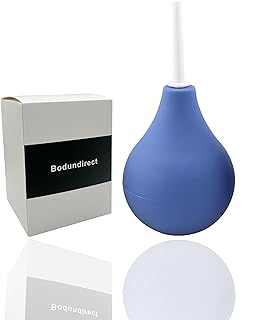5 important factors worth considering when looking for the best phototherapy light for psoriasis
Choosing the right phototherapy light is very important when it comes to treating psoriasis. The effectiveness of phototherapy in treating psoriasis depends on several key factors. These include the type of light used, how often the treatment is done, and safety features. Each of these factors plays a big role in how well phototherapy works for psoriasis. By carefully considering these factors, people can make smart choices that fit their needs and preferences. This can lead to better and more personalized psoriasis treatment.
See our guide to the best phototherapy light for psoriasis.
Light intensity
When looking to buy a phototherapy light for treating psoriasis, one important thing to focus on is how strong the light is. Choosing a light with high intensity can have a big impact on how well the treatment works. Stronger light can reach deeper into the skin, targeting problem areas more effectively. This leads to better results and faster relief from psoriasis symptoms. So, when comparing different phototherapy lights, make sure to check the intensity levels to ensure the best possible results.
In the world of psoriasis treatment, it’s crucial to prioritize quality over quantity, especially when it comes to light intensity. While a higher intensity light may cost more upfront, the long-term benefits make it worth it. Strong light not only speeds up the healing process but also shortens the overall treatment time, making it a more convenient and effective option for those dealing with psoriasis. Ultimately, focusing on light intensity when choosing a phototherapy light sets the stage for a more successful and satisfying treatment experience.
Wavelength
When choosing the right wavelength of light for treating psoriasis with phototherapy, it’s important to understand the science behind the decision. Optimal wavelengths in the UVB spectrum, usually between 311 and 313 nanometers, have been very effective in treating psoriasis. These wavelengths focus on the overactive skin cells that cause flare-ups, so it’s crucial to use a light that targets this range. The balance between effectiveness and safety is also key – higher wavelengths can have more side effects, while lower ones may not work as well. Knowing the best wavelength range is crucial for a successful phototherapy treatment for psoriasis.
Beyond just making treatment effective, the wavelength of light also affects how easy it is to get treatment. With new technology, people can now do phototherapy at home, giving them more control over managing their psoriasis. When choosing a light for home use, it’s important to make sure it works with the devices you have. Using specific wavelengths at home for psoriasis treatment represents a big change in healthcare. By combining precise wavelengths with easy access at home, treatment is easier to stick to and gives people a greater sense of control over managing psoriasis.
Safety features
Safety features are important when choosing a phototherapy light for treating psoriasis. Built-in timers and automatic shut-off functions are crucial for preventing too much UV exposure. These features make it easy to set treatment times and ensure the device turns off when the time is up. This helps people manage their therapy sessions without risking skin burns or increased sensitivity.
Adjustable intensity settings in phototherapy lights allow users to customize their treatment based on their skin sensitivity and severity of their condition. Starting at a lower intensity and gradually increasing it can reduce the chances of negative reactions. This feature not only improves safety during treatment, but also gives users control over their therapy, making them feel more confident in managing their psoriasis.
Choosing a phototherapy light with safety features is essential for a better treatment experience and promotes responsible use for optimal results for those with psoriasis.
Treatment area coverage
When you’re thinking about buying a phototherapy light for psoriasis treatment, one key thing to look at is how much skin it can cover. A light that can cover a larger area will expose more of the affected skin to the helpful UV light, which can make the treatment more effective and efficient. Choosing a device with a big coverage area lets you treat multiple areas or larger patches of psoriasis all at once, making the treatment process easier and saving you time and effort in the long run. Getting a phototherapy light with wide coverage can really make your treatments work better and help you manage your condition more effectively.
However, if you don’t consider coverage area when choosing a phototherapy light, it can make the treatment less effective. A light with limited coverage might require multiple sessions to treat all the affected areas properly, making the treatment take longer and potentially cost more overall. Focusing on smaller areas may mean the treatment is uneven or incomplete, which could lead to inconsistent results and slow down your progress in managing psoriasis. That’s why it’s important to focus on coverage area when buying a phototherapy light – it can make a big difference in how successful your treatment is, making sure you get the best results and fully benefit from phototherapy.
Adjustable settings
When buying a phototherapy light for treating psoriasis, having adjustable settings can make a big difference in how well the treatment works. Being able to change the brightness of the light based on your skin sensitivity and the severity of your psoriasis is important for getting the best results. By adjusting settings like the type of light and how long you’re exposed to it, you can personalize your treatment to fit your needs. This helps you target your symptoms more effectively and manage them better.
Getting a phototherapy light with adjustable settings not only gives you more flexibility but also lets you take an active role in your treatment. Being able to fine-tune the settings allows for a more personalized approach to therapy, so you can adjust your treatment as your condition changes. With adjustable settings, you can try different options to see what works best for you, giving you more control over managing your psoriasis. Overall, the flexibility and personalization provided by adjustable settings in phototherapy lights can lead to better results and a more positive treatment experience for individuals with psoriasis.
Conclusion
In the world of treating psoriasis, phototherapy is like a bright light of hope. It not only helps with symptoms, but also gives people with psoriasis a feeling of control. As technology improves, we see how phototherapy can make life better for those with psoriasis. By using this treatment, we can look forward to a future where psoriasis is less of a burden and people can feel healthy and confident again. Want more info on magnifying light for diamond painting, check the best magnifying light for diamond painting.



